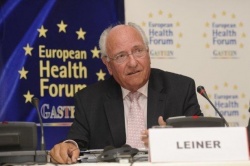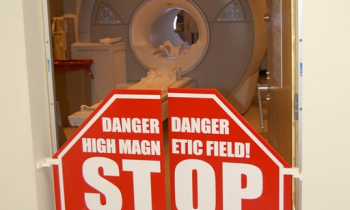EHFG 2011 - ‘There are too many unnecessary operations!’
Participants at European Health Forum Gastein 2011 (EHFG) agreed: the tendency in Germany and Austria is to operate far too soon (particularly for hip, knee and disc surgery), and many surgical interventions are unnecessary, posing a particular and increasingly urgent problem especially in industrialised countries. Hans-Christian Pruszinsky reports


‘289 operations are performed in Germany per 100,000 inhabitants; in Austria the figure is 243 per 100,000, but in Poland, for example, it’s only 39 per 100,000, and in Cyprus 15 per 100,000,’ said EHFG President Günther Leiner. ‘This is too striking a difference, and nobody can tell me that it is simply down to being a medical issue and that provision in other countries is worse. Medicine in Poland is outstanding, and the Poles are brilliant surgeons. Hence there must be another reason behind it – and, in most cases, it’s economic.’
Private patients particularly risk unnecessary or early surgery because people can still walk with a joint problem for some time without a replacement, ‘However, you can also opt for economic gain and tell the patient: “You need a new joint”.’ Professor Helmut Hahn of the Charité Clinic Berlin, pointed out.
Often, complaints can also be treated without surgical intervention, for example via physiotherapy: ‘In some cases it’s totally possible to do without surgery altogether,’ Prof. Leiner said, ‘but it’s also possible to postpone it and not operate so quickly. Each operation is an intervention and entails additional risks for the patient.’
Personalised medicine: the ‘virtual twin’
Despite big cost increases, in the last three decades advances in treatment for the most common diseases -- cancer, cardiac disease, Type-2 Diabetes, obesity and rheumatoid arthritis -- have been alarmingly modest.
Experts pointed out that the EU flagship project IT Future of Medicine could redress this. For a project cost of €1 billion over the next decade, a saving in healthcare expenditure of up to €100 billion a year is projected. Concerted advances in cloud computing, cell and molecular research, genome decoding and analysis tools for large volumes of data could help scientists to create a ‘virtual twin’ of each patient. This could simulate an individual body’s reaction to environmental conditions, lifestyle or medication, and enable the detection of any pathogenic changes even before symptoms occur.
Similarly, such systems could suggest personalised treatment options, inclusive of information on what effects and risks are to be expected in an individual case.
Prof. Angela Brand of the Institute for Public Health Genomics (IPHG) at the Faculty for Health, Medicine and Life Sciences (FHML) at the University of Maastricht and Director of the European Centre for Public Health Genomics (ECPHG) said: ‘We know that a certain percentage of people will respond to a certain drug, but not whether an individual will be among those likely to respond or not. Therefore, the chance of a cure and a lot of money is wasted on failed attempts.’
Because, in principle, each disease should be regarded as a so-called rare disease, the objective of research must be to develop treatments with high degrees of effectiveness for small, precisely defined patient groups, based on genomic information, rather than developing medication for many applications with a relatively low degree of effectiveness, added pharmacologist Andreas Penk.
2020 Europe -- 230,000 doctors short
A shortage of doctors has been widespread for some time. In the Czech Republic thousands of doctors threatened to emigrate a few months ago due to low income. Slovakian hospitals are threatened by a mass exodus of doctors; some say 4,000 doctors in 51 hospitals intend to leave this small country for economic reasons. How international this problem is, or could become, was highlighted.
According to the EU Commission, if nothing is done, European healthcare systems could be short of a million skilled employees by 2020. It estimates a shortage of around 600,000 nurses in 10 years time and a shortage of 230,000 doctors. In Germany, for instance, patients in rural areas will increasingly have to accept treatment by mobile medics -- present in certain areas only on certain days. 52,000 doctors will have to be replaced by 2020.
Doctors’ migration has turned into a business. Specialist companies place doctors from Eastern Europe wherever there is a shortage of trained medical staff.
The number of foreign doctors in West Germany between 2001 and 2009 increased by 53%; in East Germany by more than 300%. Austria also suffers shortages, particularly in rural areas.
The large number of doctors also will retire in the next few years. The need for trained nurses will also increase sharply. Austrian Minister of Social Affairs Rudolf Hundstorfer predicts the need for a further 17,000 nurses by 2020 – just to cope with demographic changes. However, according to a study, only 24% of those surveyed could see themselves working in this field.
Great Britain: Almost 50% of doctors are from abroad
The shortage of doctors will particularly impact on poorer countries, warned the World Bank’s health politics expert Armin Fidler, because wealthier states are likely to drain staff from them. Although some countries are working to improve employment conditions in their healthcare systems, staff is increasingly recruited from abroad – from hospital workers to home carers.
47% of doctors working in Great Britain have come from abroad; in Poland it is just 1%, according to the European Observatory on Health Systems and Policies. Over 10% of Romanian medics are already emigrating to Western Europe. ‘A Romanian general practitioner in France earns ten times as much as in Romania,’ Armin Fidler underline.
The discrepancy between industrialised countries and sub-Saharan Africa is even more alarming. Only 3% of the qualified, worldwide medical staff actually works there, which is made even worse by the increased demand in the north and west. However, migration does have positive aspects. Hundreds of thousands of Filipinos nurses work all over the world -- their money sent home is an important economic factor.
The ‘rescue umbrella’
The only way to counteract shortage is to improve income massively. According to a Euro Observer study, between 2005 and 2008 Lithuania increased doctor and nurse salaries by 20% annually, thereby preventing a mass exodus. Poland also managed to attract some emigrant doctors back to return by offering better salaries. However, in Romania, a 25% drop in salaries increased emigration.
Günther Leiner would like to install a permanent safety net against threatened medical staff shortages. He stipulates that, in the future, funds should be set aside from the financial transaction tax currently under discussion -- but this is still a long way off.
Finally, EU Health Commissioner John Dalli emphasised the importance of innovations to facilitate more services with fewer means. He also pointed to the success of the ‘Partnership for Healthy Ageing’ campaign across Europe. In terms of financing such innovations, he referred to the very recent EC decision on new Cohesion Funds, accessible to all European regions to fund intelligent innovations that could increase healthcare efficiency.
20.10.2011









